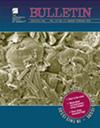西藏北部盐湖锂和硼异常富集的水化学演变及来源机制
IF 3.9
1区 地球科学
Q1 GEOSCIENCES, MULTIDISCIPLINARY
引用次数: 0
摘要
广泛分布于青藏高原的大型盐湖提供了独特而潜在的锂(Li)和硼(B)资源。这些盐湖中的元素浓度和特征与藏北地热水中的元素浓度和特征相似,这凸显了它们都是稀有元素的重要来源。本研究全面分析了藏北班公-怒江缝合带典型盐湖以及周边泉水和河流样本中的水、硼、锶、氢和氧的水化学组成和同位素。研究结果表明,扎布耶盐湖中的 B 同位素呈极负异常分布,与地热水密切相关。该地区其他盐湖中这些元素的富集归因于蒸发浓缩和沉积物吸附。鉴于地热水补给的海拔非常高,盐湖的渗透显然无法为地热泉水提供补给。相反,我们将盐湖中 Li 和 B 以及其他资源的异常富集与地热泉的排放联系起来。这些元素的最终来源是岩浆源,后来水与岩石的相互作用导致地热系统中的锂、铷(Rb)、铯(Cs)和硼等不相容元素显著富集。地热泉水直接或间接地为盐湖提供了水源,随着进一步的蒸发,盐湖变成了超大规模的卤水矿床。本文章由计算机程序翻译,如有差异,请以英文原文为准。
Hydrochemical evolution and source mechanisms governing the unusual lithium and boron enrichment in salt lakes of northern Tibet
The large-scale salt lakes widely distributed in the Tibetan Plateau provide unique and potential resources for lithium (Li) and boron (B). The concentration and characteristics of elements in these salt lakes resemble those found in geothermal water in northern Tibet, which highlights both as crucial sources of rare elements. This study presents comprehensive analyses of the hydrochemical composition and isotopes of B, strontium (Sr), hydrogen (H), and oxygen (O) in typical salt lakes, along with samples from surrounding springs and rivers in the Bangong-Nujiang suture zone of northern Tibet. The results reveal an extremely negative and anomalous distribution pattern of B isotopes in Zabuye Salt Lake that is closely associated with geothermal water. The enrichment of these elements in other salt lakes in the region is attributed to concentration of evaporation and sediment adsorption. Given the very high elevation of the recharge for geothermal water, the infiltration of salt lakes obviously cannot feed geothermal springs. On the contrary, we correlate the unusual enrichment of Li and B and other resources in salt lakes to geothermal spring discharge. The ultimate origin of these elements lies in magmatic sources, with later water-rock interaction leading to significant enrichment of incompatible elements such as Li, rubidium (Rb), cesium (Cs), and B in the geothermal system. The geothermal springs directly or indirectly fed the salt lakes, and with further evaporation, they became super-scale brine deposits.
求助全文
通过发布文献求助,成功后即可免费获取论文全文。
去求助
来源期刊

Geological Society of America Bulletin
地学-地球科学综合
CiteScore
9.30
自引率
8.20%
发文量
159
审稿时长
4-8 weeks
期刊介绍:
The GSA Bulletin is the Society''s premier scholarly journal, published continuously since 1890. Its first editor was William John (WJ) McGee, who was responsible for establishing much of its original style and format. Fully refereed, each bimonthly issue includes 16-20 papers focusing on the most definitive, timely, and classic-style research in all earth-science disciplines. The Bulletin welcomes most contributions that are data-rich, mature studies of broad interest (i.e., of interest to more than one sub-discipline of earth science) and of lasting, archival quality. These include (but are not limited to) studies related to tectonics, structural geology, geochemistry, geophysics, hydrogeology, marine geology, paleoclimatology, planetary geology, quaternary geology/geomorphology, sedimentary geology, stratigraphy, and volcanology. The journal is committed to further developing both the scope of its content and its international profile so that it publishes the most current earth science research that will be of wide interest to geoscientists.
 求助内容:
求助内容: 应助结果提醒方式:
应助结果提醒方式:


